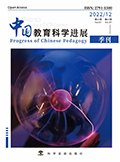

信息技术的飞速发展推动博物馆数字资源在中学历史教学中的广泛应用, 成为教育创新的重要助力。数字化文物与史料的展示突破了传统教学的时空局限, 将历史场景带入课堂, 帮助学生直观感知文物背后的故事与精神, 增强学习的真实感与情感共鸣。虚拟展览和沉浸式体验通过构建动态文化场景, 打破传统课堂的静态局限, 促进学生通过感性和多感官体验更深入地理解历史。将博物馆的学术资源引入课堂, 有助于学生超越课本知识, 深入理解历史事件的复杂性, 培养批判性思维与学术研究能力。国际二战博物馆的数字资源涵盖全球多国的战争经历, 通过设计专题研究和比较分析等教学策略, 帮助学生理解战争的多维影响, 培养全球视野、批判思维与历史反思能力。本文以抗日战争教学为例, 探讨这些数字资源在中学历史课堂中的应用策略, 以期为历史教育提供多样化、可行性的实践方案, 助力提升教学效果。
The rapid development of information technology has greatly facilitated the extensive use of museum digital resources in secondary school history education, becoming a key contributor of educational innovation. The display of digitized artifacts and historical materials overcomes the spatial and temporal limitations of traditional teaching, bringing historical scenes into the classroom. It allows students to intuitively grasp the stories and the spirit behind the artifacts, enhancing the authenticity of learning and fostering emotional resonance. Virtual exhibitions and immersive experiences create dynamic cultural scenes, breaking the static nature of traditional classrooms and enabling students to gain a deeper understanding of history through sensory and multi-sensory experiences. Integrating museum academic resources into the classroom helps students move beyond textbook knowledge, providing insights into the complexity of historical events while developing critical thinking and research skills. The digital resources from international World War II museums cover the wartime experiences of various countries. Through teaching strategies such as thematic research and comparative analysis, these resources help students understand the multidimensional impacts of war, fostering global perspectives, critical thinking, and historical reflection. Using the teaching of the War of Resistance Against Japanese Aggression as an example, this paper explores the application strategies of these digital resources in secondary school history classrooms, aiming to provide diverse and practical solutions that enhance the effectiveness of history education.